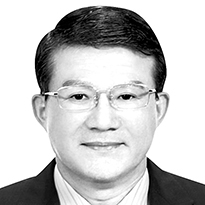Bracing for the North’s ‘gray zone’ tactics
Published: 25 Sep. 2024, 19:57
Updated: 25 Sep. 2024, 20:02

Song Seung-jong
The author is a professor of military studies at Daejeon University and head of the Center for Security Strategy at the Korea Research Institute for National Strategy.
The Rodong Sinmun reported that North Korean leader Kim Jong-un visited a massive nuclear facility aimed at producing highly enriched uranium (HEU) for nuclear weapons. The report by the North’s state mouthpiece is the first of its kind since the country embarked on nuclear development decades ago. A British media outlet quoted Dr. Jeffrey Lewis, a nonproliferation expert and a professor at the Middlebury Institute of International Studies at Monterey in the United States, as saying that the nuclear facility is likely located in the secret Kangson Complex near Pyongyang.
David Albright, an American physicist and president of the non-profit Institute for Science and International Security in Washington, raised suspicion on a close connection between North Korea and Pakistan. He assessed that the exposed centrifuges in the facility will most likely be an upgrade of those in the P2 model designed by Pakistani nuclear physicist Abdul Kahn in the late 1990s. Experts expect North Korea to further advance the low-carbon, high-strength alloy “maraging steel” to lift its uranium enrichment capacity by more than 30 percent.
The Asan Institute for Policy Studies and the Rand Corporation published a joint report in which they forecast North Korea will have more than 300 nuclear weapons by 2030 from the current 180. The report said the North aims to possess up to 500 nuclear weapons in the future.
Some analysts link North Korea’s disclosure of its HEU facility to the need to raise its strategic value before the U.S. presidential election on Nov. 5. In other words, Pyongyang wants to send a preliminary warning to Washington with a “low-intensity provocation” — milder than its seventh nuclear test — and deliver the message that it’s ready to start nuclear reduction talks with the next U.S. administration under the precondition of freezing its nuclear weapons at the current level.
North Korea flew hundreds of waste-filled balloons across the border to South Korea shortly before and after the Sept. 17 Chuseok holiday. On Sept. 12, The North fired its supersized multiple rocket launchers capable of launching rockets equivalent to short-range ballistic missiles (SRBMs). Six days later, the country launched several SRBMs into the East Sea in violation of the UN sanctions. The North’s sheer dismissal of Chuseok — the biggest traditional holiday for Koreans — could reflect its earlier declaration of inter-Korean relations as “being between two different states.”
A spate of the North’s recent provocations suggests Pyongyang’s adoption of the so-called gray zone warfare. The phrase “gray zone strategies” first appeared in the 2010 Quadrennial Defense Review mandated by the U.S. Congress. “Gray zone” in the review refers to an operational space formed between peace and war in the spectrum of conflict.
As Carl von Clausewitz — a renowned Prussian general and military theorist — wrote in his book “On War” in 1832, the atmosphere of war changes more radically than a chameleon. The color of the new type of hostility emerging in the North is gray. That signals a significant change in the bilateral conflict.
Hybrid warfare is often mentioned since the Ukraine war, while the phrase “gray zone confrontation” is frequently used to describe the ongoing territorial dispute between China and the Philippines. But a big difference here is that while a hybrid war includes the use of military means, a gray zone conflict only uses nonmilitary means. Of course, the two have overlapping features, too.
The North’s decision to make public its HEU facility — instead of carrying out another nuclear test — is aimed to show Kim’s determination to exponentially increase the number of nuclear warheads. Pyongyang perceives the massive impact of Russia’s nuclear threat in the Ukraine war. Nuclear arms cast an ominous shadow on the future of countries without them.
The possession of nukes itself poses a real threat to the enemy. Thanks to that deterrence, the North was able to fire all types of missiles, send filthy balloons across the border, conduct cyberattacks on the South and disrupt GPS signals repeatedly.
In gray warfare, South Korea faces the dilemma of how to counter nuclear weapons without having them. The time has come to devise an effective way to deal with the deepening threat. If the South decides to respond to a nuclear attack from the North, it’s too late.
Translation by the Korea JoongAng Daily staff.










with the Korea JoongAng Daily
To write comments, please log in to one of the accounts.
Standards Board Policy (0/250자)